Love & Sparkles with Katy P
The World’s Star Nail Artist 2023 shares tips, techniques & insights into her soaring career
ABOUT KATY
Katy Pottle, or ‘Katy P’, has over two decades of experience in the nail industry. From working on a mobile basis to owning a salon, her journey is a testament to her dedication and passion for the world of nails. She loves glitter and is on a mission to help nail techs worldwide shine, one intricate design at a time, with her online workshops and one-to-one masterclasses. In July 2023, following an intense competition process, Katy beat nail artists across the globe to be crowned the first World’s Star Nail Artist. She seeks to inspire and mentor fellow pros, and sprinkle her signature ‘love and sparkles’ across the industry.
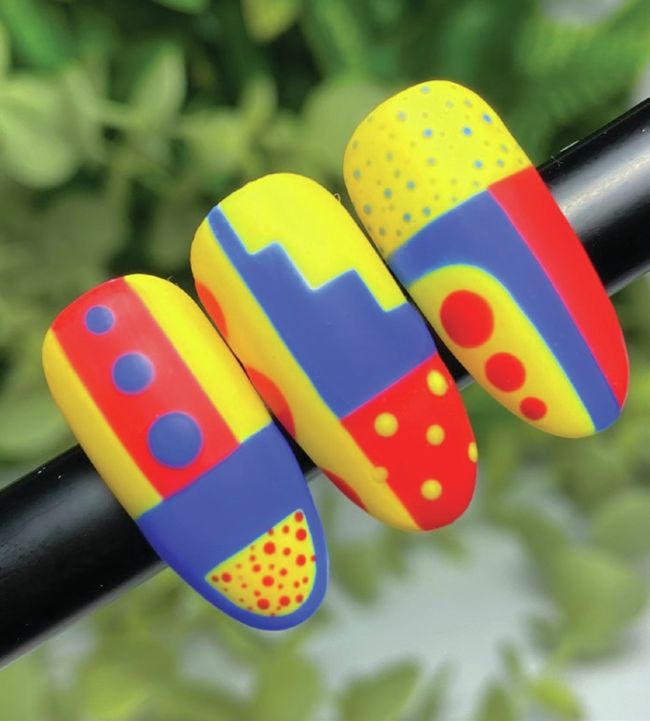
A geometric nail design created using primary colours.
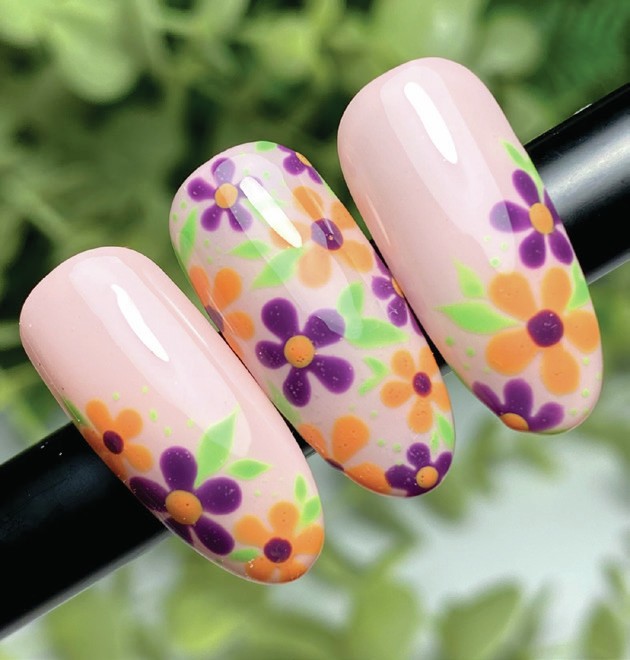
A floral nail style in secondary colours.
Colour theory: How to create harmonious & eye-catching nail art
Creating nail art designs is one thing, but choosing shades that are complementary and catch attention is a separate skill, so let’s explore the magic of colour theory. No matter what stage you are at on your nail journey, understanding how to play with colours can take your nail styles to the next level.
Do you remember learning about the colour wheel in art class? Well, it’s time to put that knowledge to good use! The colour wheel is an essential tool for stunning nail art creation.
The colour wheel consists of three primary colours: red, blue and yellow. By mixing these primary colours, you create secondary colours: orange, green and purple. By further mixing primary and secondary colours, you create tertiary colours – and unlock a new palette of possibilities.
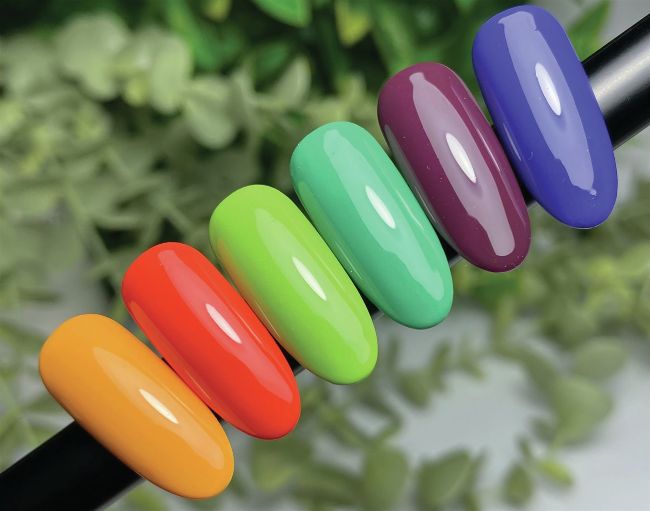
Tertiary colours.
”Don't be afraid to experiment with different colour combinations and techniques to discover what works best for you. Remember, nail art is all about expressing your creativity and having fun.”
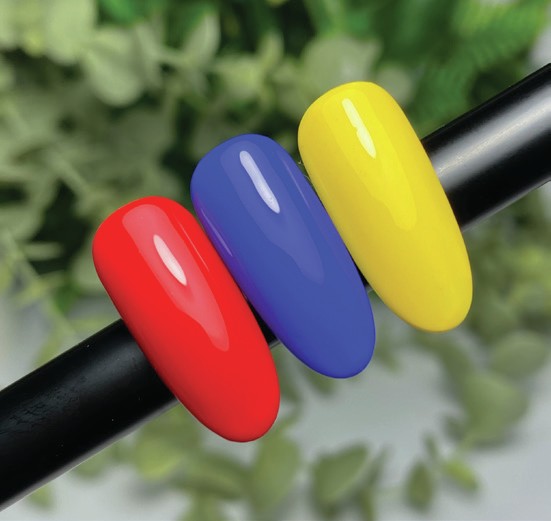
Primary colours.
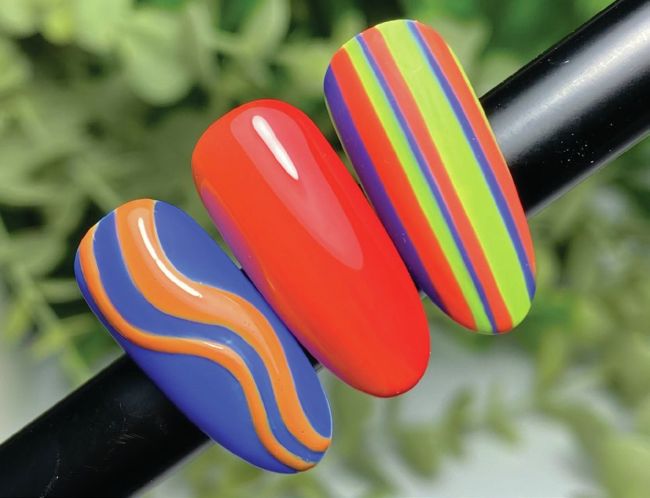
Examples of complementary, analogous, triadic designs.
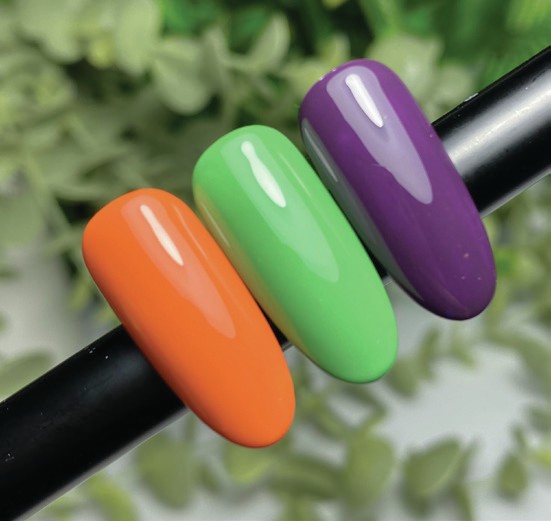
Secondary colours.
How do you choose suitable shades for your nail art? You need to consider colour harmony. Understanding this is essential for creating nail designs that are pleasing to the eye. There are several techniques to achieve this in your creations. Here are some examples:
1. Complementary colours: These are colours that sit opposite each other on the colour wheel, such as red and green or blue and orange. Pairing complementary colours creates contrast and adds visual interest to your nail designs. Try using complementary colours to create bold and striking nail art that commands attention.
2. Analogous colours: Located next to each other on the colour wheel, examples of these colours are red, orange and yellow. These hues create a harmonious and cohesive look when used together, flowing seamlessly from one colour to the next – perfect for an ombré nail design.
3. Triadic colours: These are three colours that are evenly spaced around the colour wheel, forming a triangle. For example: red, yellow and blue or yellow-green, red-orange and blue-violet. Triadic colours create vibrant and dynamic nail art that pops. Use these colour combinations to make a statement with your nail designs.
Now that you’ve got the basics of colour theory down, it’s time to put your skills to the test. Don’t be afraid to experiment with different colour combinations and techniques to discover what works best for you. Remember, nail art is all about expressing your creativity and having fun.
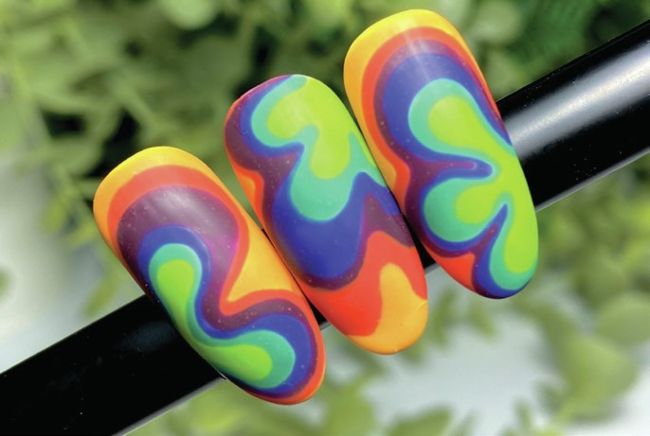
A retro-style design created using tertiary colours.
Let’s touch on one more thing: the psychology of colour. Did you know that colours can evoke certain emotions and feelings? By understanding the psychological effects of colour, you can create nail designs that resonate with your clients on a deeper level. For example, blue is often associated with calmness and serenity, making it the perfect choice for clients looking to relax and unwind. On the other hand, red is bold and energetic, making it ideal for clients who want to make a statement with their nail art. By incorporating the psychology of colour into your designs, you can create nail art that not only looks fabulous, but makes your clients feel amazing.
So, there you have it: the basic understanding of colour theory, showing that the possibilities for nail art are endless. Go and unleash your creativity, and let your imagination run wild. The world is your canvas, so paint it in colour!
Katy P x
www.katypnailartist.thinkific.com
/katypnailartist
@katyp_nailartist